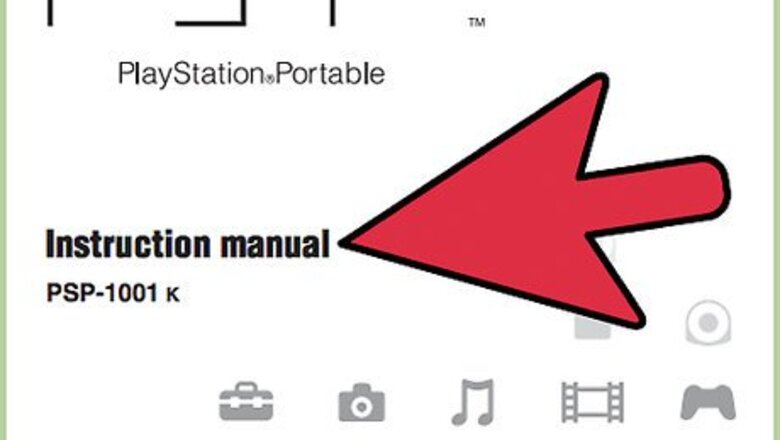
views
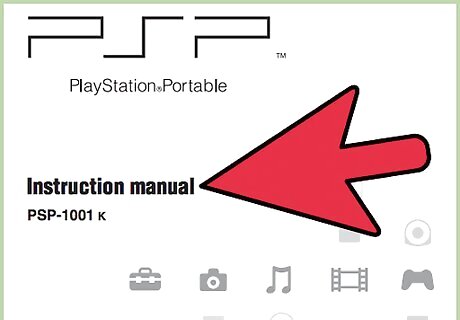
Read the manual. The manual may be large and somewhat intimidating, but just skimming through it will give you a good idea of how to use a lot of the features on your PSP. This article assumes you have done this and know the basic functions of the buttons on the PSP.
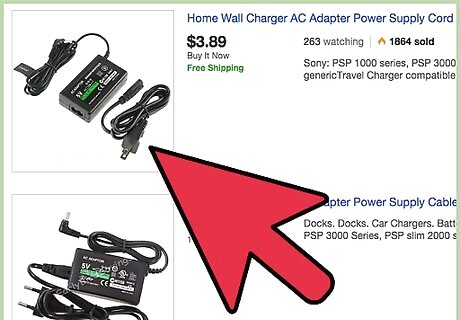
Charge it. Your PSP comes with a charger that plugs into a standard wall outlet. Plug the smaller end of the charger into the small yellow hole on the bottom right of the PSP, and the other end into a wall outlet. The PSP may take several hours to charge.
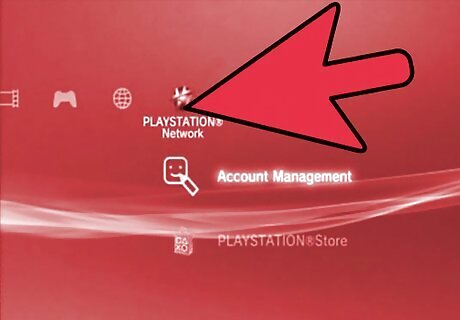
Join the Playstation Network(PSN). Many people have not yet joined PSN due to some reasons. PSN is free to join and is in every PSP on the right of the XMB page (the screen that appears when you turn on your psp) You will need your parents permission and their email address.
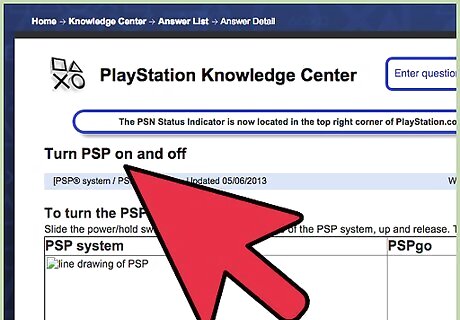
Start it up. Just push the Power Switch (Located on the bottom right of the PSP) up until the system starts. If you have a game in, it should start. Otherwise, it will load the main menu. If it's your first time using the PSP, it may ask you for time and date settings, among other things.
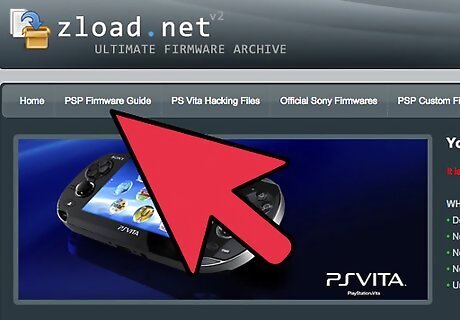
Make a choice between old, new, and custom firmwares. Firmware is the version of the software that makes your PSP tick. Every once in a while, Sony issues a new firmware with better features. There are also these things called homebrew games. These games were made by using flaws in the old firmware that allows unsigned code (a.k.a. the homebrew game code) to be ran. Homebrew games cannot be played on newest version of the firmware. Besides homebrew, old PSP firmwares can also run emulators for other game systems. There is another option as well, which is custom firmware. Custom firmware is the "hacked" version of the newer firmware. It allows you to run homebrew games, change the look and feel of your PSP's menu system, run ISOs (aka PSP game images), as well as a few other features. Getting custom firmware onto your PSP can be a dangerous process, as messing up the upgrading process results in a "bricked" PSP. Here's where you have to make choice: Do you want to play various cool homebrew games and emulators, do you want to have Flash Player, WMA Playback, Camera, MP4/AVC support, and other features, or do you want all of those options and are confident enough that you can complete it without ruining your PSP? The best version for Homebrew or custom firmware is anything below 2.81. You can downgrade very easily if you're using firmware below 2.8. Although, many games require that you have an up to date firmware. If you have 2.70 firmware, you now have access to flash content (ONLY Flash v6.0) and RSS Audio/Video channels using your internet browser. If you have 2.60, you can enable WMA playback. If you have 3.01, you have the PSP Camera Icon, PS3 Connectivity, AVC/AAC (without renaming them to M4V*****), and many other features. But if you update to latest firmware you have to wait for many months for homebrew to become playable on your PSP. Updating to custom firmware should not be done lightly, but with some research, is quite easy.
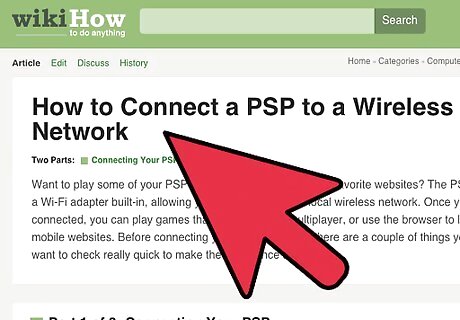
Connect to the internet (wireless network and Wi-Fi required). To do that, go to 'Settings'. Scroll down and click 'Network Settings'. You will see two choices: Ad Hoc mode and Infrastructure Mode. Choose 'Infrastructure Mode'. Create a new connection. You can name it whatever you want, but if you have firmware 2.00 or higher. Choose 'Scan' in WLAN Settings screen. Make sure that your WLAN switch is on. WLAN Switch looks exactly like on-off switch. It is located left where the direction controls are, under the analog stick and above your Memory Stick Duo. So, scan for the networks. If you have a wireless network, PSP should be able to detect it. So, choose your wireless network. If it doesn't display any results, move closer to the access point (modem, antenna, or whatever). If you have WEP password set, choose WEP in WLAN Security setting (usually, PSP does this automatically). If you don't have any security settings, pick 'none'. Address setting should be 'easy'. Connection name can be whatever you want it to be, doesn't matter. Finally, you can press X to save settings. After save is completed, click on 'Test Connection'. Usually, PSP will connect to access point, obtain IP address and display the status of the connection. In some cases, you will receive "A connection error has occurred. Connection with access point cannot be established". In this case, your network's firewall might be blocking the PSP. If you don't have a security password, do not turn the firewall off. Just, type in your IP address into your browser. You should get a setup screen, depending on your internet service provider. Different ISPs use different setup menus. Try to find settings, or utilities, or utility settings, or anything that can mean the same thing. After a little while, you will be able to find the exceptions list. Enter PSP's Mac address to allow an exception. To find your PSP's mac address, go to 'Settings', 'System Settings', and click on 'System Information'. It should be in there.
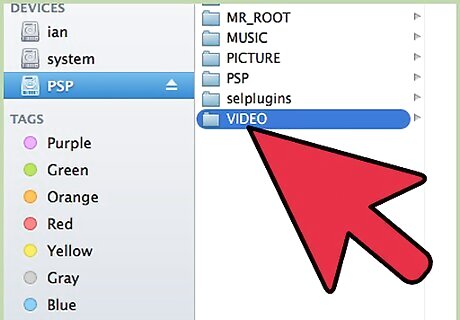
Get some videos on your PSP. On 2.71 firmware, this is very easy. You just create a VIDEO folder (video should be in all caps) on your PSP Memory stick (USB cable required), usually it's Drive E:\. Create the folder right on the memory stick and NOT inside of the PSP folder (that's what old firmwares make you do). So, This is what you should see when you click on the VIDEO folder in your status bar: e:\VIDEO . E:\ stands for whatever drive your psp is in. Inside the VIDEO folder, paste your videos. Videos can be in MP4 or AVI format. Filenames do not matter. You can also have a subfolder inside of the VIDEO folder. If you make a folder inside of a subfolder, PSP will ignore it. If you are using firmware that's bellow 3.00, you should create a folder MP_ROOT on your memory stick (again, not in PSP folder, just on memory stick). Inside of MP_ROOT Folder, you will make a 100ANV01 folder. Inside of 100ANV01 folder, you will paste your videos. Videos should be in MP4 format. Here, the filename does matter. You will rename your mp4 file to M4V*****.MP4 where each * stands for a digit.
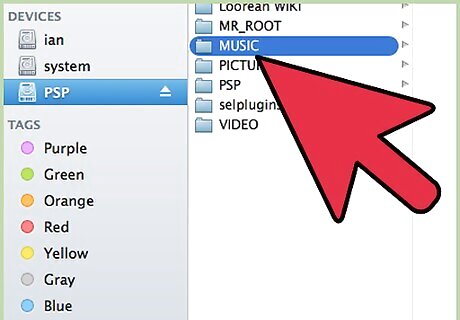
Get Music on your PSP. If you have firmware 2.80 and above, you can just put a music CD in a drive and rip the songs with windows media player in WMA format. To get music on your PSP, create a MUSIC folder inside of the PSP folder on your memory stick (make a PSP folder if it's not made already). You can create a subfolder for a specific album inside of the MUSIC folder. This is what your album folder look like on the status bar: E:\PSP\MUSIC\Album Name\song.wma . PSP will not recognize a folder inside of a subfolder. You can also get MP3s in the MUSIC folder. In fact, if you have firmware that's older then 2.80, MP3 is your only choice. You can rip MP3s using the Realplayer.
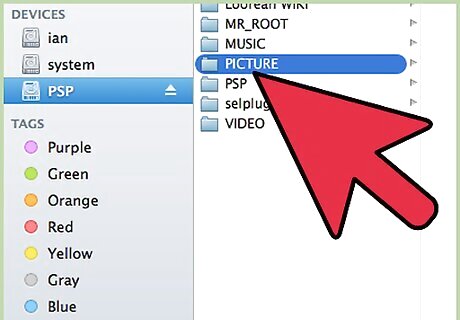
Get Images on your PSP. If you have a firmware 3.00, you can create a PICTURE folder on your memory stick duo, not in PSP folder though. Drag images to that folder. Filetypes are GIF, PNG, BMP, and JPEG/JPG. If you have a firmware that's older then 2.70, Create a PHOTO folder inside the PSP folder and put your JPEG/JPG files in there. Old PSP firmware will not recognize GIF, PNG or BMP files. You can also create subfolder inside of PICTURE folder, but you can't have a folder inside of the subfolder.
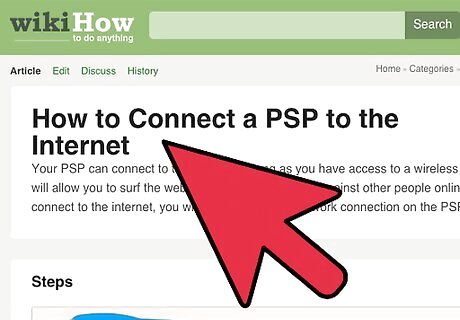
Use the Internet Browser. You can open up internet by going to the 'network' and clicking on 'Internet Browser'. You are now connected to World Wide Web. To scroll down/up and left/right, hold Square button and move the analog stick, which is also mouse. If you want page to fit on your PSP screen, click Triangle button and go to display mode in the view menu. You will find three display modes: Normal, Just fit and Smart fit.


















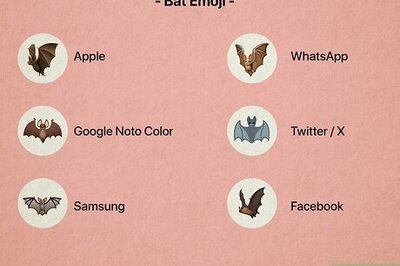

Comments
0 comment